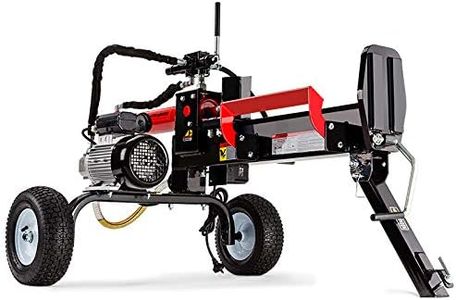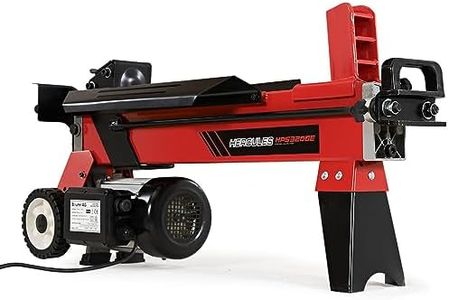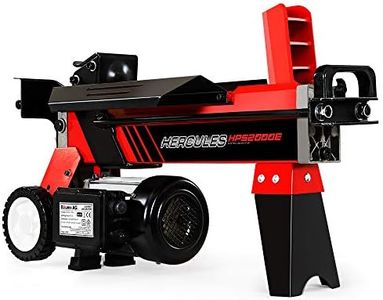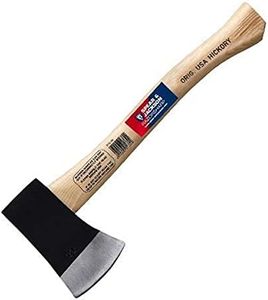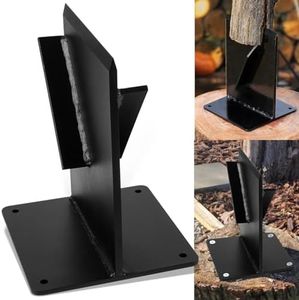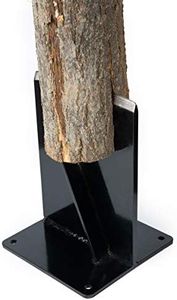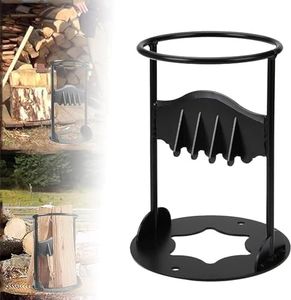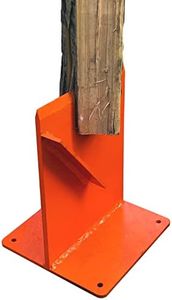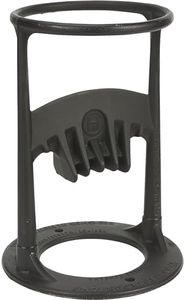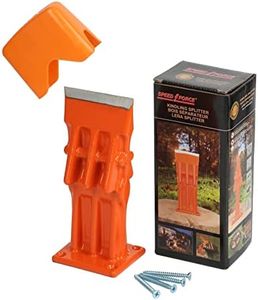We Use CookiesWe use cookies to enhance the security, performance,
functionality and for analytical and promotional activities. By continuing to browse this site you
are agreeing to our privacy policy
10 Best Log Splitters
From leading brands and best sellers available on the web.Buying Guide for the Best Log Splitters
Selecting the right log splitter can make wood preparation much easier, safer, and less time-consuming. The most important thing is to match the splitter's capabilities to the types and amount of wood you intend to process, as well as your available workspace and how often you'll use the tool. Understanding the main features will help you choose a model that suits your needs, making log splitting more efficient and comfortable.Tonnage (Splitting Force)Tonnage refers to the amount of force the log splitter can exert to split a log. The higher the tonnage, the larger and harder the wood it can split. Lower tonnage (around 4-7 tons) is suitable for softwood and smaller logs, while medium range (8-15 tons) can handle most typical firewood needs. Higher tonnage (16+ tons) is necessary for very large, hard, or knotty logs. To choose the right tonnage, think about the size and type of wood you’ll be splitting most often—soft, small logs need less force, but if you handle hardwoods or large logs, go for a higher tonnage.
Power SourceLog splitters can be powered by electricity, gasoline, or even manually. Electric models are quieter, cleaner, and easier to maintain but generally offer lower splitting force and require access to a power outlet. Gas-powered splitters are more powerful and portable, making them suitable for larger logs or remote locations. Manual splitters are lightweight, simple, and don’t require fuel or electricity, but they need more physical effort and are best for very light use. Your pick should match where you plan to work and how often you’ll use it—backyard users splitting a few logs can often use electric, while frequent or heavy users benefit from gas models.
Cycle TimeCycle time measures how long it takes for the splitter to split a log and return the ram to the starting position. Faster cycle times (under 10 seconds) allow for quicker work, which is beneficial when dealing with many logs, while slower cycle times are acceptable for occasional use or lighter tasks. If you anticipate splitting large quantities or want a more efficient process, look for a model with a shorter cycle time.
Log Capacity (Length and Diameter)Log capacity indicates the maximum length and diameter of logs a splitter can handle. Smaller splitters usually handle logs up to 16 inches long and 10 inches in diameter, while larger units can process logs well above 20 inches in length and over a foot in diameter. It's important to assess the size of wood you commonly use and make sure the splitter can handle those dimensions; otherwise, you might need to cut your logs down to size first.
PortabilityPortability refers to how easily you can move the log splitter around your yard or to another location. Some splitters come with wheels and handles for easy movement, while others are heavier and designed to stay in one place. If you plan to split wood in different places or store the unit out of sight, portability is a key factor. Consider where and how often you'll need to move the splitter to determine the importance of this feature.
Orientation (Horizontal vs. Vertical)Log splitters typically work in two orientations: horizontal and vertical. Horizontal splitters require you to lift the log onto the machine, making them better suited for smaller or lighter logs. Vertical splitters allow you to roll heavier logs into place, which reduces lifting and is ideal for managing extremely large logs. Many modern splitters allow you to switch between both modes. Your physical ability and the average size of the logs you process will help guide your choice—if you routinely split large, heavy logs, the vertical option can save effort.
Safety FeaturesSafety features like two-handed operation, automatic ram return, and shields can help prevent injury by ensuring hands stay clear of moving parts and the machine stops promptly when needed. These features are especially important for new users or households with children. Always check for built-in safety elements and prioritize a splitter that helps protect users during operation.
